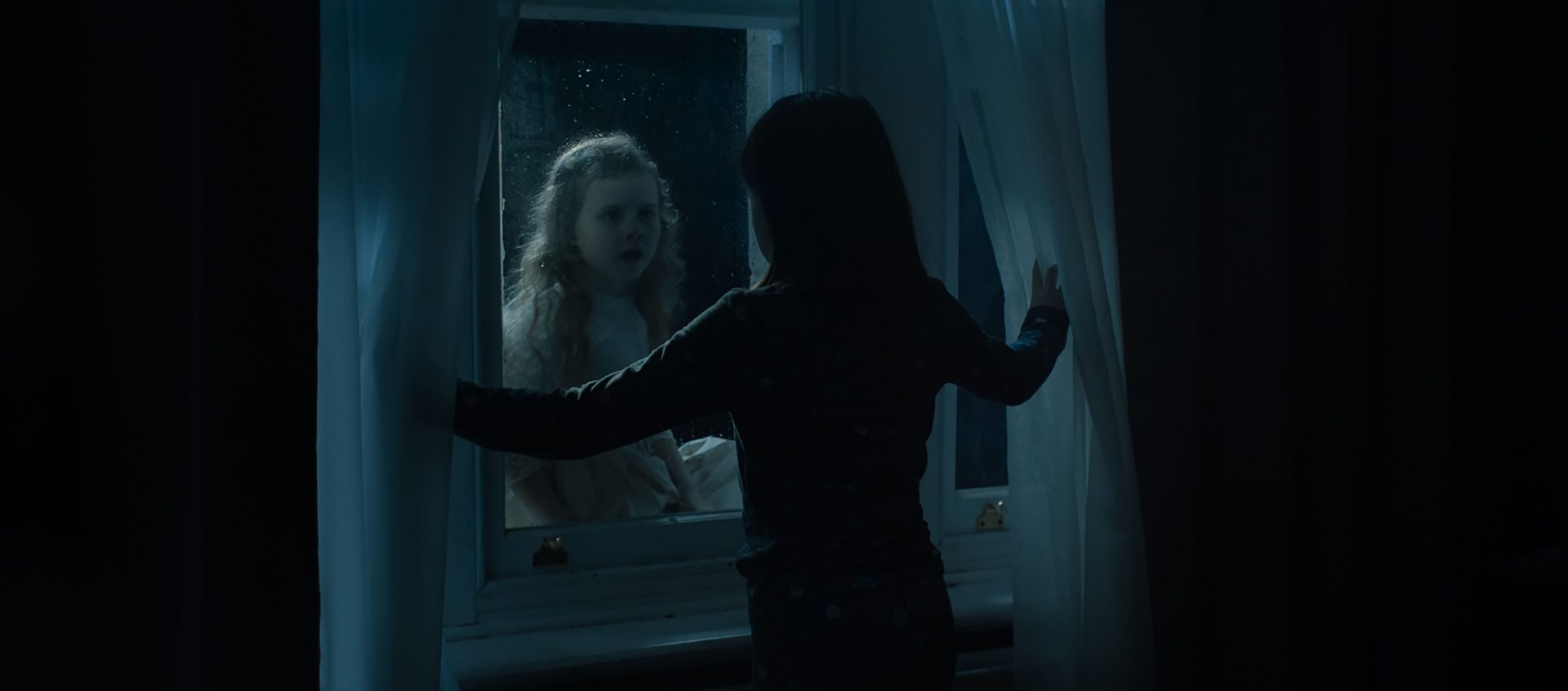If there’s a staple of post-modern horror, it’s a surety that it will delve into trauma, mental illness and self-doubt, as well as the supernatural. Ruth Platt’s third feature film treads the line through this recent fad with a style that feels distinctly old school. A modern take on a proper, old-fashioned ghost story.
The film follows ten-year-old Leah (Kiera Thompson), the youngest daughter of local Vicar Thomas (Steven Cree), and his despondent and troubled wife, Sarah (Denise Gough). Leah’s existence is confused, trying to navigate the minefield of social and community events and the mores of her difficult family. Everyone seems to be hiding secrets from her, but it’s not clear what they are, as she is ignored as often as scolded by her mother and constantly bullied her much older sister, Bex (Hannah Rae). Then, in a moment of opportunistic curiosity, she takes a lock of hair from her mother’s treasured locket and then begins to see a strange girl who appears at her windowsill each night.
There’s something satisfyingly comfortable about Martyr’s Lane. All the ingredients for a gothic ghost story are here. The giant sprawling vicarage feels like the grim old house that it is – huge, creaking and sinister, but never ridiculously so. There is also a touch of the classic English horror about proceedings, with the spooky woods and graveyards and the old church nearby giving everything a feel of late 70s TV.
Platt’s ability to wrangle great naturalistic performances from the cast is clearly proven here. Thompson carries much of the film in a taxing role requiring subtlety and range, but the absolute revelation is Sienna Sayer as the ghostly child, who speaks with a precocious confidence and an onscreen ease far beyond her years. The story also doesn’t shy away from a fairly well-considered portrayal of grief, and how secrets and trauma can break lives in ways that make no sense from the outside.
However, while the film does certainly demonstrate Platt’s strengths as a filmmaker, it also does little to mitigate some weaker aspects. The script is thin in places, and even considering the viewpoint being that of a sheltered and overly-pious 10-year-old girl, many character choices seem baffling. The pacing of the film also judders in fits and starts, and there’s a repetitiveness to the ghostly visits which removes some of their spooky effect. There is also a climactic choice towards the end to ramp events and stakes up in a fashion that feels forced, and out of kilter with most of the preceding scenes. It’s fair enough wanting things to feel bigger, but it slightly cheapens what was already effective up until that point, especially with how the scene plays out, despite there being sufficient setup. A more delicate touch and confidence in what has already been achieved would have worked far better.
All in all, this is a quaint and enjoyable melding of the current whims of horror filmmaking, combined with the styles and sensibilities of a very British style of ghostly tale. It might not be setting out to break much new ground, but what it manages, it does so solidly and spookily.
Screening as part of the Edinburgh International Film Festival 2021
